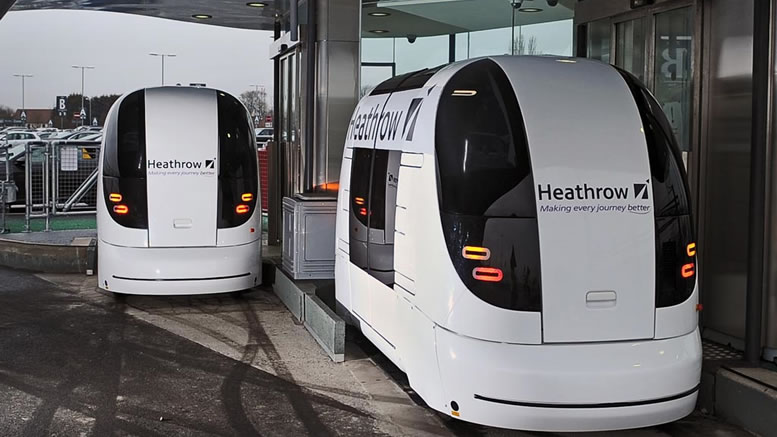 The concept of a PRT (Personal Rapid Transport) system has been about since the 50s, although to us commuters it makes great sense, many governments have put very little effort into its development until now. The ULTra (urban Light Transport) is based on a concept developed by the Advanced Transport Group at the University of Bristol. In conjunction with the Cardiff City Council a small test track had been set up in Cardiff in 2001 which led to the system being adopted by Heathrow Airport in 2011 to ferry passengers between their terminal 5 and car park.
The concept of a PRT (Personal Rapid Transport) system has been about since the 50s, although to us commuters it makes great sense, many governments have put very little effort into its development until now. The ULTra (urban Light Transport) is based on a concept developed by the Advanced Transport Group at the University of Bristol. In conjunction with the Cardiff City Council a small test track had been set up in Cardiff in 2001 which led to the system being adopted by Heathrow Airport in 2011 to ferry passengers between their terminal 5 and car park.
The ULTra joins a host of systems around the world racing to be the first commercial PRT service which have been spurred on since the rapid development of computers during the 80s and 90s. The idea behind PRT systems is quite simple, traditional transit systems like trains and buses are costly to run and many times of the day they are being operated with very few passengers because their schedule says so. A PRT does away with schedules and long costly to run carriages, instead each system has hundreds of small 4 person electric driverless cars, made from light materials the cars are cheap to run and instead of constantly running all day they only operate when someone buys a ticket.
When you arrive at your station to board your car, there will be several empty cars waiting for passengers. If one station gets a build up of too many empty cars the system will automatically ship them off to another empty station, 95% of all passengers will wait less than 1 minute for a car in peak periods. Each station sits just off the main track, if you want to go from the local station to the city station you wont need to stop at each station on the way, your car will bypass these stations making the ride faster than a normal train.
Other benefits include up to 80% less energy required per passenger than a train with zero emissions in city areas, it is also expected the system will be whisper quiet. While it seems like a dream for most cities, in the future this system may be more cost effective as fuel and wage costs soar, the benefits of replacing existing infrastructure may outweigh the cost persisting with the existing transport technology.
